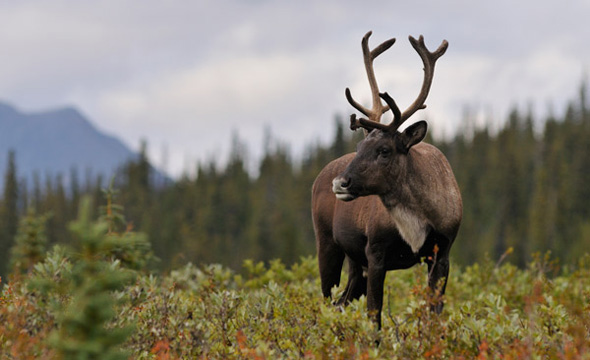Available from:
http://ac.els-cdn.com/S0006320712005101/1-s2.0-S0006320712005101-main.pdf?_tid=0d26d438-6bd9-11e2-a75c-00000aacb35e&acdnat=1359659254_80ad092820212837736a10b1f3396592
As we have just learnt in class tropical rainforest's, such as the Amazon, have a high amount of biodiversity. This is why it is mind-boggling that gold mining, hunting and logging is going on in the Amazon even though so many different species live in the geographical range. In the last century Jaguars have lost 40% of their range because of habitat loss (Tobler et al. 2013). The Amazon is thought to be the largest habitat left for jaguars, and it is also thought to be key to their survival (Tobler et al. 2013). Recently jaguars were re-classified on the Peruvian red list as a near threatened species (Tobler et al. 2013).

Tobler et al. decided to research whether or not mining and logging is effecting the Jaguars that live in the Amazon (2013). They did this by performing the largest study of Jaguars in the Amazon to date. Tobler et al. observed the density of jaguars in different areas of the amazon by using six camera trap surveys. They also looked at whether or not a logged area would alter the amount of jaguars in that location. Below is a figure showing where the six camera trap surveys were set up and the shaded areas are where the jaguars are protected.
The results of Tobler et al.'s study showed that the average density of jaguars is 4.4 ± 0.7 jaguar 100 km2. This supports the hypothesis that the Amazon is an extremely important habitat for the Jaguar species. They also found that jaguar densities did not decrease around logged areas.
Tobler et al. did however bring up the issue that the prohibition of hunting jaguars and selling their teeth, claws, skin parts and full skins in markets should be better enforced. It seems when entering the marketplaces in local areas different parts of the jaguars were being sold.
It is disturbing that an animal such as the jaguar has become a threatened species over the last few years because of the expansion of agriculture. Human population is definitely the biggest issue for conservation biologists today.
Interesting Facts:
- A jaguar's teeth can puncture the skull of large prey piercing the brain
- Every jaguar has a unique pattern of spots
- They will not hunt alone until they are six months old, and for the next two years of their life they stay with their mother
- They roar
- Each day they eat approximately 75 lbs of food
- They eat the lungs and the heart of their prey first
Word Count: 414



